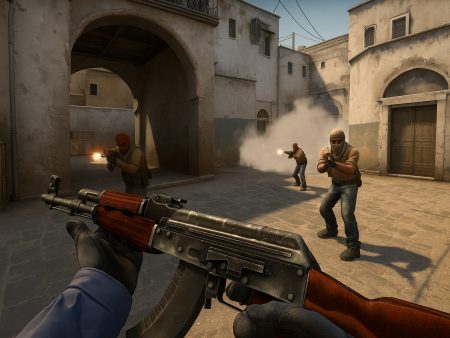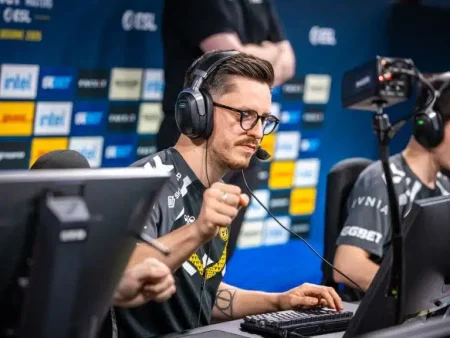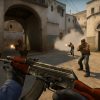Discover how damage, armor, and wall penetration work in CS2. Learn about weapon stats, armor mechanics, bullet penetration, and pro strategies to dominate your matches. Master CS2’s combat system with this in-depth guide.
When Valve launched CS2 as the successor to CS:GO, fans expected graphical overhauls and minor balance tweaks. But what they got was a fundamentally refined version of Counter-Strike’s core combat engine. CS2 introduces a new sub-tick server system, physics-based smoke, and a more realistic handling of bullet damage, armor interactions, and penetration mechanics.
What this means for players is that every bullet you fire has a more “real” feel, and the game’s mechanics are far more precise. From hit registration to armor calculations, CS2 is not just a skin upgrade—it’s a ground-up modernization. If you played CS:GO, you’ll notice that the way your bullets interact with armor, how walls absorb damage, and how distance influences impact has been noticeably refined.
This evolution has created a steeper learning curve but also opens doors to more tactical depth. Whether you’re a casual player or pushing rank in Premier mode, understanding these underlying systems will give you a massive advantage in firefights.
Why Understanding Damage and Armor is Crucial for Competitive Play
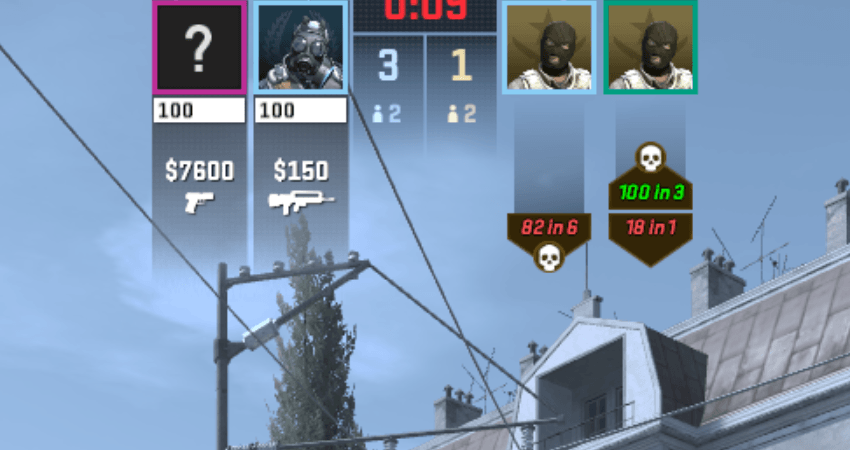
Here’s the truth: You can have god-tier aim and still lose fights because you don’t understand how damage scales, how armor soaks up hits, or what makes a bullet penetrate a wall effectively.
In CS2, winning a duel often comes down to micro-decisions. Did you buy armor this round? Are you peeking with an armor-penetrating weapon? Are you shooting through plywood or concrete? All of these factors influence your ability to kill or be killed.
In competitive games, milliseconds matter—and so does each point of damage. Knowing whether to aim for the chest or head based on armor status, or choosing a weapon with better penetration to shoot through Mirage’s B apps wall, could mean clutching the round or getting clapped.
So if you’re trying to climb the ranks, stop relying on raw aim alone. Mastering the science of damage and armor mechanics will separate you from the average player—and maybe even turn you into that guy who always seems to get the sneaky wallbang kills.
CS2 Damage System Explained
Weapon Damage Values
Every weapon in CS2 has a unique base damage value. This is the amount of raw damage it deals before any modifiers like hitbox multipliers, armor mitigation, or surface penetration apply.
Let’s break it down:
- AK-47: Base damage around 36.
- M4A4/M4A1-S: Base damage between 33–38 depending on distance.
- AWP: One-shot kill to chest or head with 115+ base damage.
- Deagle (Desert Eagle): Huge damage (up to 53), good for eco rounds.
These numbers might seem small, but remember—CS2 applies multipliers. A headshot often does 3x damage, and even a pistol can one-shot with the right aim.
Here’s the kicker: weapon damage also scales down with range. Some weapons lose damage over distance (like the MP9), while others like rifles remain effective. That’s why spraying with an SMG from long A on Dust2 is often useless compared to using a rifle.
And don’t forget—some weapons have better armor penetration. So even if the base damage is lower, it could be more effective in armored situations.
If you ever wonder why your USP-S dinked a guy but didn’t kill—this is why.
Hitbox Multipliers and How They Affect Damage
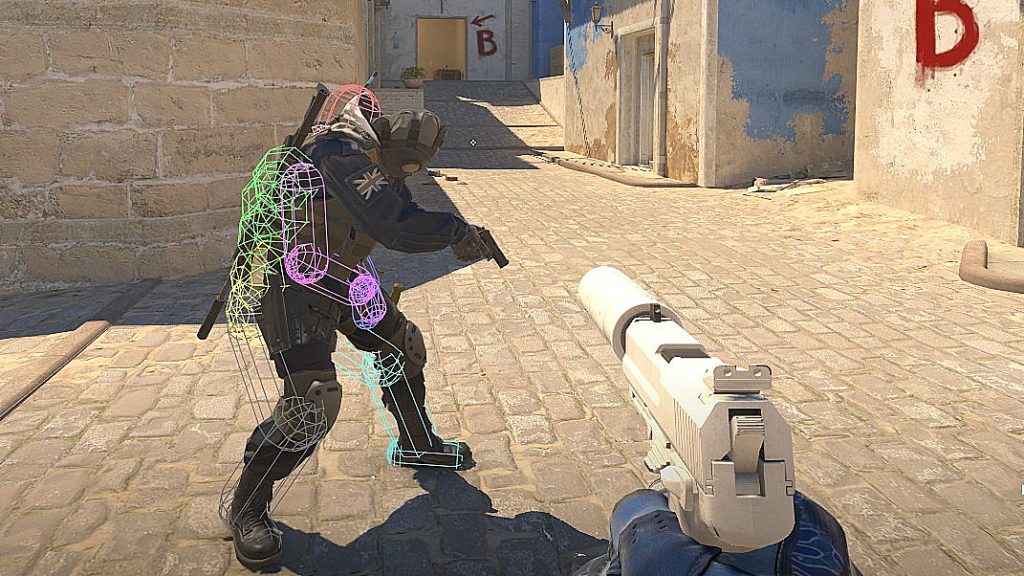
Hitbox multipliers are the real secret sauce of CS2 damage. A bullet to the head isn’t just a normal hit—it’s a multiplier of the weapon’s base damage. CS2 divides the player’s model into different hitboxes:
- Head: ~4x multiplier (instant kill with most rifles)
- Chest/Stomach: ~1.25x multiplier
- Arms/Legs: ~0.75x or less
So, hitting the head with an AK-47 (36 base damage x 4 = 144) will instantly drop a fully armored enemy (who only has 100 HP). That’s why headshots are so deadly.
On the other hand, spraying and hitting limbs will likely result in lower damage and more chances for your enemy to survive and counter you. This is also why many players prefer weapons with better accuracy and headshot potential, like the AK or Deagle.
Understanding these multipliers is essential for learning when to tap, when to burst, and when to go for full spray.
The Role of Range and Accuracy in Damage Output
In CS2, distance does matter. Weapons have a “range modifier” that reduces their damage over long distances. For instance:
- SMGs: Drastically reduced damage at long range.
- Rifles: Consistent across medium to long range.
- AWP/Scout: Virtually no drop-off.
So if you’re using a MAC-10 and trying to kill someone across A Long, you’re going to have a bad time. On the flip side, rifles like the AK-47 and M4A4 retain damage surprisingly well, making them more versatile.
Accuracy also ties into this. CS2 rewards players who learn spray patterns and tap fire at long distances. Missed shots due to recoil can cost you more than just a duel—it can cost your team the round.
Pro Tip: Use tap shots or short bursts at long range to maximize your damage and preserve accuracy. You’ll be surprised how many fights you win simply by being more precise than your opponent.
Armor in CS2: How It Works
Types of Armor – Kevlar and Helmet
Armor in CS2 comes in two flavors: Kevlar and Kevlar + Helmet. If you’ve ever wondered why you sometimes get instantly headshotted or why your bullets feel like they’re doing nothing—it probably comes down to what kind of armor your opponent is wearing.
- Kevlar (Body Armor): This protects your torso from bullets. It reduces the damage taken from shots to the chest, stomach, and arms.
- Helmet: This adds protection against headshots from most weapons, especially pistols and SMGs.
Here’s a quick breakdown of what helmet armor protects against:
| Weapon | Helmet Protection? | One-shot Headshot? |
|---|---|---|
| Glock-18 | ✅ Yes | ❌ No |
| USP-S / P2000 | ✅ Yes | ❌ No |
| Deagle | ❌ No | ✅ Yes |
| AK-47 | ❌ No | ✅ Yes |
| M4A4 / M4A1-S | ✅ Yes | ❌ No |
| AWP | ❌ No | ✅ Yes |
Most players always buy Kevlar + Helmet, especially in gun rounds, because a single headshot can otherwise end the round for you instantly. But it also costs more—$1000 for full armor compared to $650 for Kevlar only. So in eco rounds, players may skip the helmet.
Understanding what your opponent can and can’t survive helps you choose your aim spots better. If they can’t afford helmets, you can go for more aggressive headshots even with an SMG.
How Armor Reduces Incoming Damage
Armor doesn’t make you invincible, but it significantly reduces how much damage you take—especially from bullets hitting the torso.
When you get hit and you’re wearing armor, two things happen:
- Damage is mitigated — the game calculates how much of the bullet is absorbed by the armor.
- Your armor takes damage — reducing its effectiveness for future hits.
The formula is somewhat complex, but here’s a simplified version:
- If a shot hits your armored area, about 50% of that damage is absorbed by the armor.
- Some weapons have high armor penetration (like the AK-47), which ignores more of the armor’s mitigation.
For example, if you’re hit in the chest with a weapon that does 40 base damage and you’re wearing armor:
- You might only take 20–25 actual HP damage,
- And your armor will lose durability.
Eventually, if your armor depletes, you’ll start taking full damage again. This is why maintaining armor from round to round is a big part of CS2’s economy and strategy.
When to Buy Armor – Strategy and Economy

Armor decisions can make or break your team’s economy. In full-buy rounds, there’s no question—buy Kevlar + Helmet. But in eco or force rounds, things get trickier.
Let’s break it down by scenario:
- Pistol Round (Round 1):
- CTs often buy armor to tank a few hits and survive early fights.
- Ts sometimes skip armor for utility (e.g., smoke + flash for a B execute).
- Force Buy Round:
- Consider skipping the helmet if the enemy mostly has rifles (AKs will one-tap through helmets anyway).
- Anti-Eco Round (You’re Upgraded, Enemy is Poor):
- Expect pistols like Deagle or Five-Seven—buy helmet if you have spare cash.
Here’s a good rule of thumb: If the enemy team has pistols or SMGs, helmet matters. If they have AKs or AWPs, helmet won’t save you from a headshot.
Also, armor is reusable! If you survive a round with armor intact, you can carry it over and save money next round. Smart players keep an eye on how much armor they have left before deciding to rebuy.
Weapon Penetration in CS2
Wallbangs and Surface Penetration Mechanics
Wallbanging—the ability to shoot through walls or surfaces—is alive and well in CS2. In fact, CS2 makes wallbang mechanics more realistic with improved hit registration and surface penetration models.
In short, whether a bullet goes through a wall (and how much damage it deals afterward) depends on:
- Weapon penetration power
- Material of the surface (wood, metal, concrete)
- Angle and thickness of the shot
For example:
- Shooting through thin wooden doors on Inferno or Dust2 will allow bullets to pass easily, dealing reduced but still significant damage.
- Trying to shoot through thick concrete (like Mirage’s B site bench wall) will block most of the damage—or the bullet entirely.
Each weapon has a penetration value, and each material has a resistance value. The lower the resistance and the higher the weapon’s penetration power, the more damage will get through.
Wallbangs can also create psychological pressure. If you know a player is behind a wall or box, spraying through it can either kill them or force them to move—giving your team space.
How Different Weapons Interact with Different Surfaces
Weapons are not created equal when it comes to wallbang potential. High-caliber weapons like the AWP or AK-47 have much better penetration power than SMGs or pistols.
Here’s a simplified comparison:
| Weapon | Penetration Strength | Ideal for Wallbangs? |
|---|---|---|
| AK-47 | High | ✅ Yes |
| M4A4/M4A1-S | Medium | ✅ Yes |
| AWP | Very High | ✅✅ Absolutely |
| SMGs (MP9, MAC-10) | Low | ❌ No |
| Deagle | Medium | ✅ Situationally |
Some weapons, like the AWP, can even one-shot through certain walls if aimed at the head. Combine this with accurate enemy info or a sound cue, and you can secure kills without even seeing your enemy.
Practicing common wallbang spots (like Banana on Inferno or B apps on Mirage) will massively boost your utility as a player.
Penetration Power Stats and Weapon Classes
CS2 doesn’t display penetration stats in-game, but they’re baked into the code and known in the community. Here’s a general guide:
- AWP / Scout: Best penetration in the game.
- AK-47 / M4A1-S: Strong enough to wallbang thin surfaces effectively.
- Pistols (Glock, USP): Minimal penetration—won’t do much through walls.
- Shotguns: Almost zero penetration; close-range only.
Certain weapons like the SSG 08 (Scout) are surprisingly effective at shooting through doors and thin walls despite being cheaper.
Understanding these classes helps you decide which angles are worth pre-firing or wallbanging. For example, you might never prefire through a wall with a MAC-10, but with an AK? Go for it.
Damage Calculation Formula in CS2
Breaking Down the Damage Formula
Let’s break down how CS2 calculates damage, because it’s not as simple as just firing a bullet and dealing raw numbers. Behind every bullet is a complex equation that determines how much damage is actually inflicted on a player.
Here’s a simplified version of the damage formula:
Final Damage = Base Weapon Damage × Hitbox Multiplier × Range Modifier × Penetration Modifier – Armor Reduction
Let’s explain each component:
- Base Weapon Damage: The starting point. This is defined in the weapon’s stats. For example, AK-47 has 36 base damage.
- Hitbox Multiplier: Based on where the bullet hits—head, chest, stomach, arms, legs.
- Range Modifier: Weapons lose effectiveness over distance. Rifles like AKs have better range modifiers than SMGs.
- Penetration Modifier: If a bullet passes through an object (like a wall or teammate), it loses damage.
- Armor Reduction: If the opponent has armor, a portion of the damage is absorbed.
Let’s say you headshot someone with an AK-47 from mid-range through a wooden box while they’re wearing a helmet:
- Base damage = 36
- Hitbox multiplier = 4x (headshot) → 144
- Range modifier = 0.95 (slight loss over distance) → ~137
- Penetration modifier = 0.5 (wood wall) → ~68
- Armor reduction = Applies, but not enough to survive
Boom. That’s a kill, but it shows how much each factor matters. Change any variable (e.g., no helmet or no wall in the way), and the outcome shifts.
The Role of Penetration and Armor in the Final Damage Output
Now, let’s get a bit deeper into how armor and penetration specifically influence final damage.
Penetration:
When a bullet hits a surface before reaching the enemy (a wall, a box, or another player), it suffers a damage penalty based on:
- Thickness of the surface
- Material type (wood, metal, etc.)
- Angle of entry
A bullet that passes through a thick metal wall might only retain 10–20% of its original damage. Conversely, shooting through plywood might retain 50–70%.
Armor:
Once the bullet reaches the enemy, if they have armor:
- Damage is reduced before being applied to HP.
- Some of the damage is absorbed by the armor itself.
- If the damage is high enough (like a Deagle or AK headshot), armor won’t save the player.
What’s critical to understand here is that armor affects the final damage, not the base. So penetration and range modifiers happen first, then armor kicks in.
A real-world example:
- Deagle headshot (74 damage base × 4 = 296)
- If it hits a helmet, armor tries to absorb some
- But 296 is more than enough to kill, even after armor mitigation
This is why some weapons are “one-shot” regardless of armor, and others feel inconsistent unless you aim perfectly.
The Impact of Bullet Spread and Inaccuracy
How Spray Control Affects Damage
Bullet spread—often referred to as “spray pattern”—is one of the core skills in CS2. Every automatic weapon has a unique pattern it follows after the first shot, and if you don’t control it, your bullets will fly wildly around the crosshair.
Here’s the kicker: damage doesn’t matter if you don’t hit. You can have an AK-47 (one-tap potential), but if you’re spraying without controlling the recoil, you might only land limb shots—dealing 10–20 damage per hit.
Understanding spray control means:
- Practicing the spray pattern of rifles in offline training maps.
- Learning how to counter-strafe to reset accuracy.
- Knowing when to burst versus when to spray.
If your first bullet hits the head but the next five land on the enemy’s feet, that’s not effective damage.
Pro Tip: For rifles like the AK-47 or M4A1-S, first-shot accuracy is insanely important. That’s why crouch-tapping or micro-bursting often yields more damage in fights than holding down mouse1.
First Shot Accuracy and Tap Shooting
First-shot accuracy is what separates good players from elite players in CS2. The first bullet fired from a rifle when standing still (or crouching) is perfectly accurate. That means:
- If your crosshair is on the head and you click once, the bullet will land exactly there.
- No spread, no deviation, no RNG.
This is why tap shooting (firing single shots quickly) is so effective at medium to long ranges. It allows you to retain accuracy while dishing out high-damage headshots.
Tap shooting is especially useful when:
- The enemy is far away (Long A on Dust2, CT from B site on Mirage)
- You’re holding a tight angle and don’t want to expose your position
- You’re using a high-damage weapon like the Deagle or AK
Players who rely on tap shooting have better headshot percentages, conserve ammo, and often win long-range duels—even against spraying opponents.
Want to increase your damage per round? Master the art of tap shooting.
Real-World Scenarios and Strategy Tips
Peeking vs Holding – Damage Advantage Explained
Whether you’re peeking an angle or holding one, understanding how CS2 registers damage in these micro-moments is key to winning more duels.
Peeker’s Advantage exists in CS2, although it’s been reduced with the introduction of sub-tick servers. Still, the player who moves into an angle (the peeker) often sees the enemy before being seen themselves. This makes the first shot advantage more common for peekers.
But here’s the twist: damage output still favors accuracy, not aggression. If you peek recklessly and whiff, the player holding the angle can dish out more accurate, high-damage shots.
So how do you leverage this?
- As a Peeker: Pre-aim common angles, strafe out smoothly, and rely on your crosshair placement to land first-shot headshots.
- As a Holder: Hold tighter angles to reduce enemy visibility. Tap or burst shoot instead of panicking.
In terms of raw mechanics:
- If both players have rifles, the one who lands the first shot to the head or upper chest usually wins.
- This is where damage knowledge comes in—aiming for the center of mass if the enemy is likely armored can secure the kill faster.
Smart players use jiggle peeks, shoulder peeks, and bait shots to manipulate damage exchanges and control engagements.
Using Wallbangs to Your Advantage
Wallbangs aren’t just flashy plays—they’re calculated damage dealers that can give your team the upper hand without direct engagements.
Let’s talk about how to use wallbangs strategically:
- Pre-fire common positions: Like Ninja on Mirage, B car on Dust2, or A site default on Inferno. Even if you don’t kill, you chip armor and cause panic.
- Delay bomb defuses: If you know someone’s defusing behind a smoke or wall, a few well-placed shots can stop the defuse or kill them outright.
- Punish common hiding spots: Map knowledge lets you land easy 30–50 damage hits through walls, softening targets for your teammates.
Some CS2 pros even use sound cues and utility timings to bait wallbangs. For example, throwing a flash and immediately spraying through a known hiding spot can net easy kills.
Remember: Even if wallbangs don’t always kill, they:
- Reduce enemy HP
- Drain armor
- Force repositioning
- Deny area control
Practicing high-value wallbang spots will make you a menace—even if your aim isn’t perfect.
Armor Economy and Utility Management
When to Force Buy Armor
The art of the force buy is one of CS2’s most debated strategic decisions. Whether you’re ecoing after a lost pistol round or trying to break the enemy’s economy mid-half, the decision to buy armor is critical—and risky.
So, when is it smart to force buy armor?
Situations where force buying armor makes sense:
- Round 2 after planting the bomb but losing the round: Ts often force buy AKs, Galils, or SMGs + armor to break CT economy.
- Round 2 as CTs if you got a few kills and they planted late: You can risk SMGs and armor to fight off their weak buys.
- When your team agrees to push for map control: Armor gives you durability in fast engagements (like a B rush).
When to avoid it:
- If your team is not coordinated
- If you’re the last one alive every round and can’t save
- If it’ll ruin your full buy in the next round
Also, don’t forget the helmet debate: You might not need it in a force buy if the enemy is using AKs or AWPs—they’ll one-shot you anyway. Save that $350 for a flash or molly that could win you the round.
CS2 isn’t just about frags—it’s a financial chess game. Buying armor with poor timing can leave you under-equipped when it really matters.
Choosing Between Utility and Kevlar
Let’s say you only have $1000 left. You can’t buy everything. So—Kevlar or utility?
This choice comes down to your role and the round context.
Buy Kevlar if:
- You’re the entry fragger who will take the first duel.
- You expect close-range fights where being tanky matters.
- Your team already has the utility they need.
Buy utility if:
- You’re playing support, anchoring a site, or need to smoke or flash for teammates.
- You’re saving for a full buy next round but still want to contribute.
- You know the enemy has low HP or bad positioning, and nades can do the job.
Here’s a priority list some players use:
- Smoke
- Flash
- Kevlar
- Molotov
- HE grenade
- Decoy (almost never)
The idea is simple: Sometimes a $300 flash can win you a duel better than Kevlar can save you from it.
Testing and Practicing Damage and Penetration
Useful Workshop Maps and Console Commands
If you want to truly understand and master CS2’s damage and penetration system, you need to hit the lab. Luckily, the CS2 community has some fantastic resources and tools.
Workshop Maps to Practice On:
- “Recoil Master” – Learn spray patterns and bullet control.
- “Yprac Aim Trainer” – Offers penetration tests, hitbox guides, and bot training.
- “Wallbang Training” – Lets you test weapon penetration on different surfaces.
Search these maps in the Steam Workshop. They simulate real in-game environments, and show you:
- Bullet damage per shot
- Penetration potential
- Spray consistency
Key Console Commands:
sv_cheats 1sv_showimpacts 1– Shows where bullets land.sv_damage_print_enable 1– Prints damage dealt in console.r_drawothermodels 2– See player models through walls (for testing).weapon_accuracy_nospread 1– Practice raw aim with zero randomness.
You don’t need to guess how much damage a Deagle does through a door—you can test it yourself.
Practice 15 minutes a day in these maps, and you’ll see serious improvement.
How to Train Wallbang Spots
Wallbangs are no longer just for the pros. With the right practice, you can master map-specific wallbangs that catch players off guard and give your team the upper hand.
Here’s a methodical approach:
- Pick one map to master (like Mirage).
- Learn common positions behind soft cover—triple boxes, B apps van, A default.
- Go into offline mode with bots or friends.
- Line up crosshairs and test through walls.
- Use
sv_showimpacts 1andsv_damage_print_enable 1to see results.
Over time, you’ll create a mental library of damage-efficient pre-fires. Even if you don’t get kills, you’ll:
- Deal chip damage
- Force players to move
- Waste their utility or force bad positions
Wallbang mastery = free damage + free mind games.
Weapon Tier List Based on Damage and Penetration
Best Rifles and SMGs for Armor Penetration
Not all guns are equal when you’re fighting armored enemies. Some weapons are basically peashooters if your opponent has Kevlar, while others will chew right through.
Top Rifles for Armor Penetration:
- AK-47 – 77.5% armor penetration. One-tap headshot, even against helmets.
- AUG/SG553 – High penetration, fast kill time, scoped accuracy.
- M4A1-S – 70%+ penetration, consistent in full buys.
- FAMAS/Galil – Budget-friendly, but decent armor damage.
Best SMGs for Armor Penetration:
- MP7/MP9 – Good in close quarters, moderate penetration.
- UMP-45 – High armor penetration for its class.
- MAC-10/MP5-SD – Decent vs unarmored, but poor against full buys.
Pistols That Pack a Punch
In pistol rounds or eco rounds, some pistols can still punch above their weight:
- Deagle – King of eco rounds. One-tap headshots, solid armor penetration.
- P250 – Budget-friendly and effective against armor.
- CZ-75 – Great burst, good for surprise frags.
- Five-Seven / Tec-9 – Solid against armor, especially close up.
When you’re broke, picking the right pistol can still get you massive value—especially if you aim for the head.
Changes from CS:GO to CS2 in Armor and Penetration
Patch Notes and Meta Shifts
With CS2’s release, Valve made subtle but meaningful changes to how armor, damage, and penetration behave. Some updates were under the hood—others were more obvious.
Key changes:
- Improved hit registration thanks to sub-tick servers.
- Reworked smoke physics, which affect visibility in wallbang situations.
- More consistent penetration mechanics across different maps.
- New sound cues when bullets hit armor vs flesh—provides info mid-fight.
- Visual clarity in impacts—now easier to tell where bullets land.
These tweaks mean that even CS:GO veterans had to relearn timings, peeking habits, and wallbang angles.
What Pros Say About the New System
Many professional players noted:
- Spray control feels tighter, especially in spray transfer scenarios.
- Armor is more important in force buys than ever before.
- Wallbangs are deadlier thanks to clearer audio and visual indicators.
You’ll now see pros wallbang more confidently, hold tighter angles with full armor, and prioritize headshots even more in CS2.
Common Myths About Damage and Armor in CS2
Debunking Misconceptions
Let’s clear up some myths that keep getting tossed around by misinformed players:
- “Helmet always protects against headshots” – False. The AK-47 and AWP will still one-shot you through a helmet.
- “Deagle kills in one shot no matter what” – Only to the head. Chest shots won’t kill if the opponent has armor.
- “You don’t need armor if you’re good at aiming” – You’ll still lose aim duels. Armor keeps you in the fight.
- “Wallbangs don’t work in CS2” – Massive myth. Wallbangs are more viable than ever.
- “All bullets do the same damage if they hit” – Nope. Location, armor, range, and surface all matter.
Knowing the facts is the first step to becoming a smarter, deadlier player.
How to Master the System as a Player
Learning Through Demo Reviews
Want to level up fast? Start watching your demos.
Here’s how damage, armor, and penetration awareness improve through reviews:
- Notice fights where you lose despite hitting first—did you aim for armored areas?
- Track wallbang attempts—were they effective, or did you waste ammo?
- Watch how pros take fights—how often they buy armor, use utility, or tap instead of spraying.
Use CS2’s built-in demo viewer or tools like ShadowPlay or OBS to record your matches. Watching back helps you:
- Understand poor engagements
- Track which angles expose you to wallbangs
- Optimize your buy decisions
Self-review turns brainless play into calculated mastery.
Conclusion
Mastering how damage, armor, and penetration work in CS2 is like learning a new language—it takes time, practice, and a bit of research. But once you’ve got it, you unlock an entirely new level of play.
No more wondering why your bullets didn’t kill. No more guessing whether that wallbang would work. And definitely no more dying to pistols while fully kitted.
This system isn’t just technical—it’s strategic. Your awareness of armor levels, weapon strengths, and smart positioning can literally change the outcome of a match.
So take this knowledge, jump into a deathmatch or workshop map, and start applying what you’ve learned. You’ll win more duels, survive longer, and maybe—just maybe—start dropping 30 bombs more often.
FAQs
Does armor completely block headshot damage?
No. Weapons like the AK-47 and AWP can still one-shot you through a helmet. Armor reduces some damage but doesn’t make you invincible.
Can all weapons penetrate walls the same way?
Not at all. Weapons like the AWP and AK-47 have much higher penetration power than SMGs or pistols.
Is it worth buying armor every round?
In most full-buy rounds—yes. But in eco rounds, consider the enemy’s weaponry before deciding.
How can I know if I hit someone through a wall?
Enable damage print in console (sv_damage_print_enable 1) or watch the killfeed/scoreboard in official matches. You’ll also hear a distinct hit sound if you land a shot.
What’s the best weapon for wallbang kills in CS2?
The AWP is the best for one-shot wallbangs, followed by the AK-47 and M4A4 for consistent through-wall damage.
